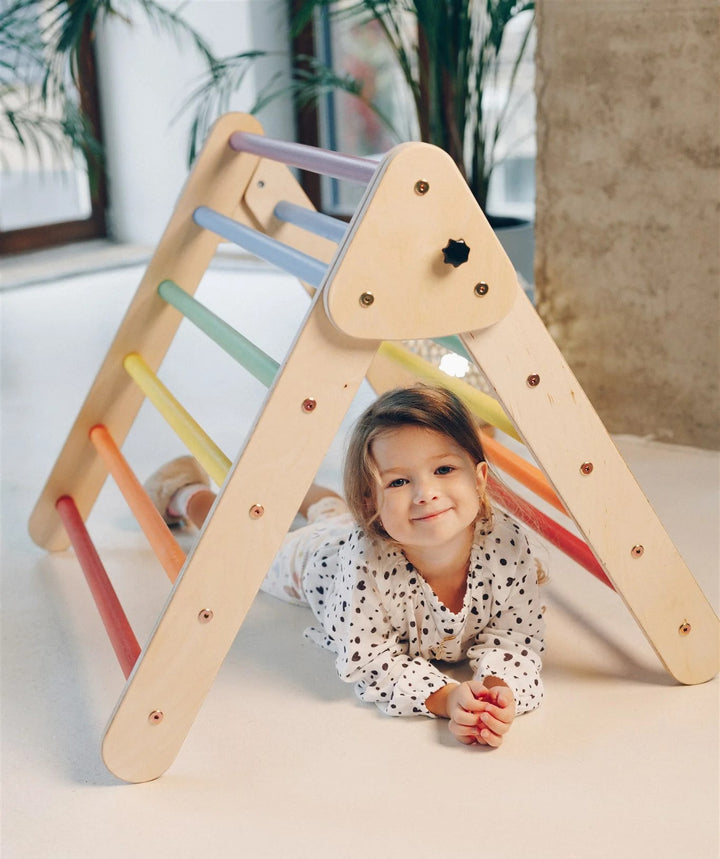
In the vibrant world of play for babies and toddlers, the Pikler Triangle has taken center stage, adding a splash of excitement to developmental activities. But what exactly is a Pikler Triangle, and how can the choice of colors in a Pikler Triangle set impact the experiences of our little ones? Let's dive into the colorful journey of this climbing wonder and uncover the meaning behind the hues that surround our toddlers' play.
What is a Pikler Triangle?
A Pikler Triangle is more than just a play structure; it's a wooden haven for exploration and growth. Named after Dr. Emmi Pikler, a pioneer in child development, this triangular structure encourages tots to climb, crawl, and conquer challenges at their own pace. It's a playground of possibilities, fostering physical and cognitive development in a secure and imaginative space.
Colors in a Pikler Triangle Set:
When it comes to choosing the best Pikler Triangle set, colors play a crucial role. Each hue brings its own energy and meaning to the play experience:
- Vibrant Reds and Yellows:These warm tones evoke feelings of excitement and enthusiasm, perfect for encouraging active play and exploration.
- Calm Blues and Greens:Soothing and peaceful, these colors create a serene environment, ideal for moments of quiet concentration and imaginative play.
- Neutral Tones:Earthy browns and soft grays in a Pikler Triangle set can provide a timeless and gender-neutral aesthetic, blending seamlessly into various play spaces.
Montessori and Pikler Triangle:
For parents who embrace Montessori principles, the Pikler Triangle is a natural fit. It aligns with the philosophy of self-directed learning, independence, and respect for the child's pace of development. The addition of colors in the Pikler Triangle set complements the Montessori approach, offering a sensory-rich environment that engages and stimulates young minds.
Benefits of Colorful Play:
- Stimulation:Different colors stimulate different parts of the brain, promoting sensory development in babies and toddlers.
- Mood Enhancement:Colors can influence mood, creating a dynamic and versatile play environment that adapts to the child's emotional needs.
- Cognitive Development:Recognizing and naming colors contributes to cognitive growth, enhancing language skills and categorization abilities.
In Conclusion:
The Pikler Triangle, with its captivating design and thoughtful use of colors, stands as a beacon of joy and learning for our little ones. When choosing the best Pikler Triangle set, consider the hues that resonate with your child's personality and the play environment you wish to create. It's not just a climbing structure; it's a canvas of exploration, bringing the magic of color and play together in a delightful symphony of childhood.

